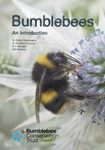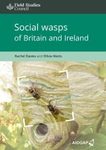"I have been reading bits and pieces of the book, dipping in here and there like a chimpanzee with a twig, fishing for ants, and each time I have come up with something tasty and nutritious [...] My favorite ["Interlude"], an economical two-page essay called "The Porter Wedge Micrometer: Mental Health for Myrmecologists," ought to be required reading for any scientist who wants to write for the public [...] This brief essay is entertaining and significant, a real glimpse of what science is and how it is done by human beings, rational and un-, grappling with technique, nature and the gathering of information. This is what the public needs to know about science, not just the results presented in the driest form possible."
– James Gorman, New York Times, 2006-04-25
"This book is a masterly and detailed account of some of nature's greatest opportunists, the fire ants. It deals with their phylogeny, biogeography, social organization, parasites, and foraging behavior, together with their impacts on natural ecosystems and agriculture. Walter Tschinkel's holistic approach embraces topics at the molecular level and relates them to the colony and its organization. Tschinkel has researched these ants for thirty-five years at Florida State University, Tallahassee. He and several generations of his postgraduate students have been one of the major driving forces in fire-ant studies. This body of work required the mastery of finely tuned laboratory techniques in analytical chemistry, a detailed understanding of the natural history of the ants, extended periods of uncomfortable fieldwork and getting badly stung [...] Tschinkel's love of and fascination with the ants shines through the often highly technical aspects of The Fire Ants. He writes with great clarity and his book should appeal to the general reader, as much as the specialist. It is well illustrated with graphs, tables, and excellent photographs."
– Christopher O'Toole, Times Literary Supplement
"This book is without parallel as a thorough description of the biology of an important social insect. There are books on particular problems of social insect biology, and of course the landmark volume by Hölldobler and Wilson treats all ant biology. The Fire Ants stands out for its focus on a single species, covering the entire range of an enormous literature. It will therefore be of interest to specialists and to a more general audience who wish to learn about what is important in the ant world."
– Joan Herbers, Dean of Biological Sciences, Department of Evolution, Ecology and Organismal Biology, The Ohio State University
"This is a wonderful book, comprehensive in its coverage of fire ant social biology, extraordinarily lucid in its description of complex topics, and beautifully synthetic in tying together the many disparate threads of evidence relevant to the discussion of each topic. The prose is concise and compact, but the wit and humor of the author penetrate even the most tedious technical parts to lighten up the text and make it a pleasure to read. The book is laced with insightful and humorous interludes that detail the tools and personalities involved in fire ant research, and covers the major topics likely to be of interest to evolutionary biologists and ecologists who study social animals, especially social insects. The Fire Ants is certain to be widely read."
– Kenneth Ross, Professor of Entomology, University of Georgia






































